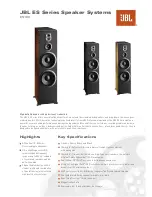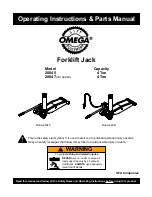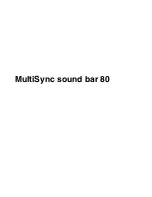
10
c.
Adjust the
minimum
volume
control knob
(marked “LO” and located at the side of the con-
troller) until the desired pressure differential is
registered on the manometer. To determine the
required pressure differential, refer to Table 5 and
the Linear Averaging Probe Chart provided on the
side of the VAV unit and in Fig. 6.
d.
Reconnect the thermostat line.
Balancing
Procedure
(Control
Sequences
1104-1110)
1. Damper action is factory set at N.O. (normally open) or
N.C. (normally closed). To reselect, loosen damper selec-
tion switch screw, align pointer with damper pointer and
tighten screw. The spring range of the actuator is not criti-
cal since the controller will output the necessary pressure
to the actuator to position the damper according to set
point. (See Fig. 11.)
2. Pipe the controller: Connect port “B” to the damper actu-
ator. Connect port “M” to the clean, dry main air. Connect
port “T” to the thermostat output. Connect port “H” to the
total pressure tap on the airflow sensor. Connect port “L”
to the static pressure tap on the airflow sensor.
The controller can be set up for cooling or heating applications
using either a Direct Acting (DA) or Reverse Acting (RA)
thermostat signal. The two flow adjustments are labeled “LO
STAT
∆
P” and “HI STAT
∆
P.”
LO STAT
∆
P
setting is the desired airflow limit when the
thermostat pressure is less than, or equal to, the reset start
point.
•
For DA Cooling or RA Heating:
Adjust LO STAT
∆
P to the desired minimum airflow
with 0 psig (or a pressure less than the reset start point)
at port “T.” The LO STAT
∆
P must be set first. The LO
STAT
∆
P will affect the HI STAT
∆
P setting.
•
For RA Cooling or DA Heating:
Adjust LO STAT
∆
P to the desired maximum airflow
with 0 psig (or a pressure less than the reset start point)
at port “T.” The LO STAT
∆
P must be set first. The LO
STAT
∆
P will affect the HI STAT
∆
P setting.
HI STAT
∆
P
setting is the desired airflow limit when the ther-
mostat pressure is greater than, or equal to, the reset stop-point.
The reset stop-point is the reset span pressure added to the
reset start-point pressure.
•
For DA Cooling or RA Heating (see Fig. 12):
Adjust HI STAT
∆
P to the desired maximum airflow with
20 psig (or a pressure greater than the reset stop point) at
port “T.” The HI STAT
∆
P must be set last. The HI STAT
∆
P setting will be affected by the LO STAT
∆
P setting.
•
For RA Cooling or DA Heating (see Fig. 12):
Adjust HI STAT
∆
P to the desired minimum airflow
with 20 psig (or a pressure greater than the reset stop
point) at port “T.” The HI STAT
∆
P must be set last. The
HI STAT
∆
P setting will be affected by the LO STAT
∆
P
setting.
NOTE: After the “LO STAT
∆
P” and “HI STAT
∆
P” initial
adjustments are made, cycle the thermostat pressure a few
times to settle the internal reset mechanisms and verify set-
tings. Fine tune the settings if necessary. The thermostat pres-
sure may be left at a high pressure and the “G” port cap may be
removed and replaced to cycle the reset mechanism.
RESET START
setting is factory set at 8.0 psig. This is the
lowest thermostat pressure that the LO STAT
∆
P airflow will
begin to reset towards the HI STAT
∆
P airflow. To change the
RESET START setting: regulate thermostat pressure to the “T”
port to the desired reset start point pressure, adjust RESET
START adjustment until pressure at the “G” port is slightly
higher than 0 psig, i.e., 0.1 psig.
NOTE: The “G” port taps into the controller’s internal reset
chamber, which always starts at 0 psig. The RESET START
adjustment is a positive bias adjustment that sets the desired
thermostat start point to the controller’s internal reset start
point of 0 psig.
RESET SPAN
setting is factory set at 5.0 psig. This is the
required change in thermostat pressure that the controller will
reset between the LO STAT
∆
P setting and the HI STAT
∆
P
setting. To change the RESET SPAN setting: adjust RESET
SPAN adjustment until pressure at the “G” port equals the
desired reset span pressure.
NOTE: The “G” port taps into the controller’s internal reset
chamber, which will always be at a pressure between 0 psig
and the RESET SPAN pressure.
Preventative Maintenance
1. Inspect pneumatic tubing for loose connections or leaks.
2. Clean out pneumatic line filters regularly according to
manufacturers recommendations.
Pneumatic Control Troubleshooting —
See Table 5.
Table 5 — Troubleshooting
NOTE: Always Check:
1. Main air pressure (15 psi to 25 psi) at the controller.
2. Disconnected or kinked pneumatic lines to the controller.
3. Quality of compressed air (oil or water in lines).
4. Proper thermostat signal and logic (Direct/Reverse Acting).
5. Blocked velocity probe or insufficient primary supply air.
6. Leaks in the actuator diaphragm.
7. Mechanical linkage of the actuator/air valve.
PROBLEM
PROBABLE CAUSE
Controller does not reset to maximum or minimum set point during
balance procedure.
Balancer is using the thermostat for control signal. An artificial signal
must be provided in place of the thermostat.
Controller does not reset to maximum or minimum set point during
operation.
Thermostat is not demanding maximum or minimum air volume. Main
air pressure at the controller is less than 15 psi.
Pneumatic actuator does not stroke fully.
Leak in pneumatic line between the controller and the actuator. Main
air pressure at the controller is less than 15 psi. Leak in the diaphragm.
Air valve stays in wide open position.
Velocity probe is blocked by an obstruction (sandwich bag, etc.).
Insufficient supply air in the inlet duct.










































